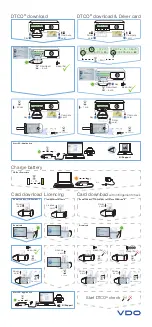
47
1.
What is the indication range of the EZ Read 800 Plus and how does this specification
differ from the linear range?
The Biochrom EZ Read 800 Plus has an indication range of 0.000-3.300 OD and a linear
range of 0.100-2.500 OD. We recommend that the broader indication range should be
used only for relative determinations but not for determining the quantity of the
absorbing material. Only measurements made within the linear range should be used for
quantitative calculations.
2.
If a measurement is made by the Biochrom EZ Read 800 Plus that exceeds the maximum
indication range, how is that measurement represented?
If a well measurement at a particular wavelength exceeds the maximum indication range,
then the well will be represented with ‘’O/R’’.
3.
When using Galapagos software to control the Biochrom EZ Read 800 Plus, can specific
wells be designated as blanks and can those values be automatically subtracted from the
remaining wells?
The Biochrom EZ Read 800 Plus comes with standard software, Galapagos Software,
which does allows the user to define specific wells. Specific wells can be allocated to
certain controls (such as positive or negative controls). Users can input details of the
controls such as the name and type of control. Users can use threshold calculations to
subtract readings from other wells.
4.
Which Microsoft Windows operating systems are Galapagos compatible with?
Galapagos is compatible with Windows XP with SP3 and higher versions.
5.
Why do I get different readings from the same sample in different wells in the
microplate?
Check correct sample volume has been dispensed. This is important as pathlength (which
is used to calculate sample concentration using Beer’s Law) is not standardised and is
dependent on sample volume. Therefore the volume must be equal throughout the plate.
The quality of the microplate is paramount to the quality of the measurements because a
microplate reader sends light through a sample vertically. Use high quality, optically clear
microplate for best results.
In addition, it is important to use a reference wavelength when measuring a microplate.
Microplates may have smudges, scratches, lids and other forms of optical interference
which may obstruct the light beam. A reference wavelength allows for a well by well
control of imperfections in the plate.
When choosing a reference wavelength, use a wavelength at which the sample of interest



































